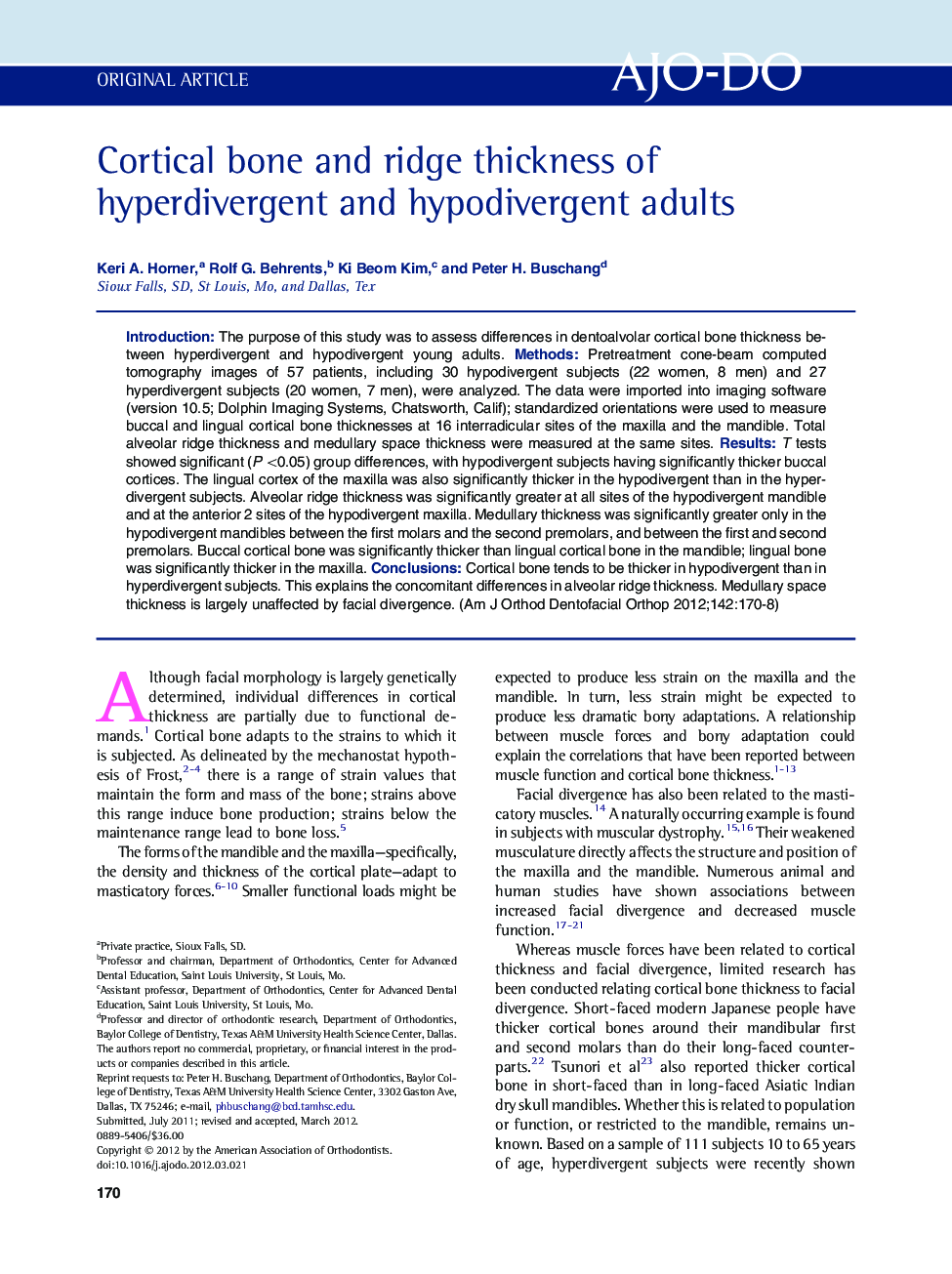| Article ID | Journal | Published Year | Pages | File Type |
|---|---|---|---|---|
| 3116498 | American Journal of Orthodontics and Dentofacial Orthopedics | 2012 | 9 Pages |
IntroductionThe purpose of this study was to assess differences in dentoalvolar cortical bone thickness between hyperdivergent and hypodivergent young adults.MethodsPretreatment cone-beam computed tomography images of 57 patients, including 30 hypodivergent subjects (22 women, 8 men) and 27 hyperdivergent subjects (20 women, 7 men), were analyzed. The data were imported into imaging software (version 10.5; Dolphin Imaging Systems, Chatsworth, Calif); standardized orientations were used to measure buccal and lingual cortical bone thicknesses at 16 interradicular sites of the maxilla and the mandible. Total alveolar ridge thickness and medullary space thickness were measured at the same sites.ResultsT tests showed significant (P <0.05) group differences, with hypodivergent subjects having significantly thicker buccal cortices. The lingual cortex of the maxilla was also significantly thicker in the hypodivergent than in the hyperdivergent subjects. Alveolar ridge thickness was significantly greater at all sites of the hypodivergent mandible and at the anterior 2 sites of the hypodivergent maxilla. Medullary thickness was significantly greater only in the hypodivergent mandibles between the first molars and the second premolars, and between the first and second premolars. Buccal cortical bone was significantly thicker than lingual cortical bone in the mandible; lingual bone was significantly thicker in the maxilla.ConclusionsCortical bone tends to be thicker in hypodivergent than in hyperdivergent subjects. This explains the concomitant differences in alveolar ridge thickness. Medullary space thickness is largely unaffected by facial divergence.
